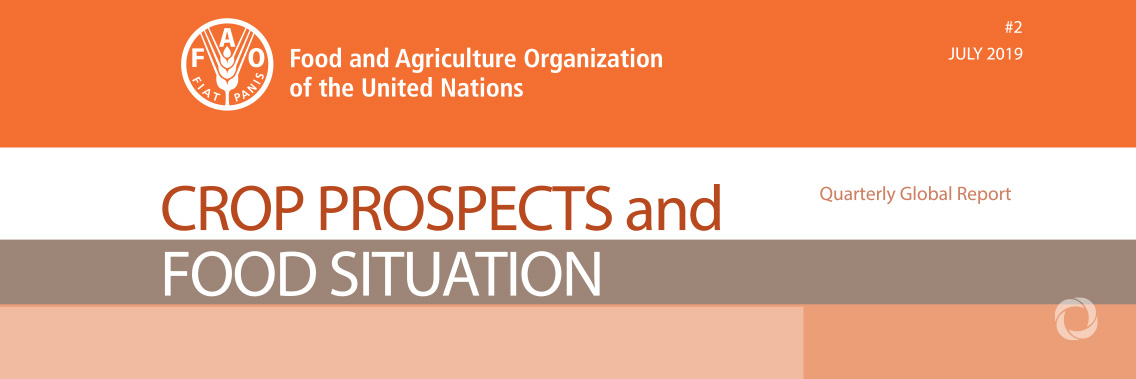Ongoing conflicts and dry weather conditions remain the primary causes of high levels of severe food insecurity, hampering food availability and access for millions of people, according to the Crop Prospects and Food Situation report.
The report by the Food and Agriculture Organization of the United Nations states that 41 countries, of which 31 are in Africa, continue to be in need of external assistance for food, unchanged from three months ago.
Cyclone damage and rainfall deficits in 2019 caused significant agricultural production shortfalls in Southern Africa, resulting in substantial increases in cereal import needs. Harvests declined for a second consecutive year in Zimbabwe and Zambia, while neighbouring countries also registered production cuts driven by unfavourable weather, including cyclone-hit Mozambique. Food insecurity in Zimbabwe is likely to worsen considerably in 2019, exacerbated by large spikes in staple food prices and the economic downturn. At the start of 2019, already about 3 million people in the country were considered to be food insecure.
In East Africa, severe dryness negatively affected first season harvests and led to a degradation of rangeland conditions. The largest year-on-year cereal production decreases in 2019, in relative terms, are expected in Kenya, Somalia and the Sudan, where harvests are anticipated at below-average levels, the report notes.
According to the recent 2019 FAO/WFP Rapid Food Security Assessment Mission, more than 10 million people, or 40 percent of the total population, are currently food insecure and in urgent need for food assistance.
In Asia, a below-average 2018/19 wheat and barley outputs are expected in the Democratic People’s Republic of Korea and there are also concerns for the main 2019 season crops, to be gathered by October, largely due to reduced rainfall and low irrigation water availability. According to the recent 2019 FAO/WFP Rapid Food Security Assessment Mission, more than 10 million people, or 40 percent of the total population, are currently food insecure and in urgent need for food assistance.
The 41 countries currently in need of external food assistance are: Afghanistan, Bangladesh, Burkina Faso, Burundi, Cabo Verde, Cameroon, Central African Republic, Chad, Congo, Democratic People’s Republic of Korea, Democratic Republic of Congo, Djibouti, Eritrea, Eswatini, Ethiopia, Guinea, Haiti, Iraq, Kenya, Lesotho, Liberia, Libya, Madagascar, Malawi, Mali, Mauritania, Mozambique, Myanmar, Niger, Nigeria, Pakistan, Senegal, Sierra Leone, Somalia, South Sudan, Sudan, Syrian Arab Republic, Uganda, Venezuela, Yemen, Zimbabwe.
Read and download FAO Crop Prospects and Food Situation.
Original source: FAO
Published on 04 July 2019

